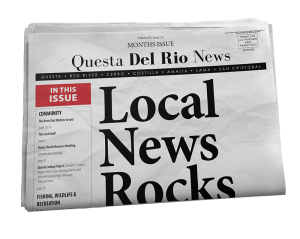
The “Blue Bus,” owned and operated by the North Central Regional Transit District (NCRTD), announced via press release in mid-July that it has received a $9.5 million grant from the US Department of Transportation’s Rebuilding American Infrastructure with Sustainability and Equity (RAISE) discretionary grant program.
The district plans to utilize the funding to enhance the connectivity between Santa Fe, Española, and Taos while creating hubs along the transit route. Additionally, seven diesel electric hybrid buses will be added to the Rural Rapid Transit system, which will increase the number of buses serving the route overall to 21.
“This grant marks a pivotal moment for our region’s transportation infrastructure,” said NCRTD Executive Director Anthony Mortillaro, “it will allow us to advance our vision of integrated mobility and community vitality through the development of an innovative Rural Rapid Transit system that will connect our communities and help the environment.” Questa del Rio News specifically asked the NCRTD how this would impact those who live in the northern Taos County region. Rick L’Amie, a spokesperson for the district, responded, “The people of Questa and Red River will eventually be able to take a bus to Taos to connect with our proposed Rural Rapid Transit network, which will have more buses operating with a higher frequency between Taos and Santa Fe. When the system is fully built out over the next 20 years, buses will operate as often as every 15 minutes along the route.”
Currently, the district is only able to operate a bus on this route every 3 to 5 hours on weekdays. In addition, weekend service is expected to commence. As a part of the district’s efforts to increase trip frequency across the network, L’Amie says “there will be priority signalization technology installed on the buses that communicate with stop lights to extend green lights as a bus approaches, allowing buses to make faster trips with less stops.” They also plan to operate all buses with zero emissions by 2045, meaning buses will be all-electric or have some other emission-free technology.
The district plans to work toward these improvements in phases. Phase One implementation may start as soon as October of 2026.




